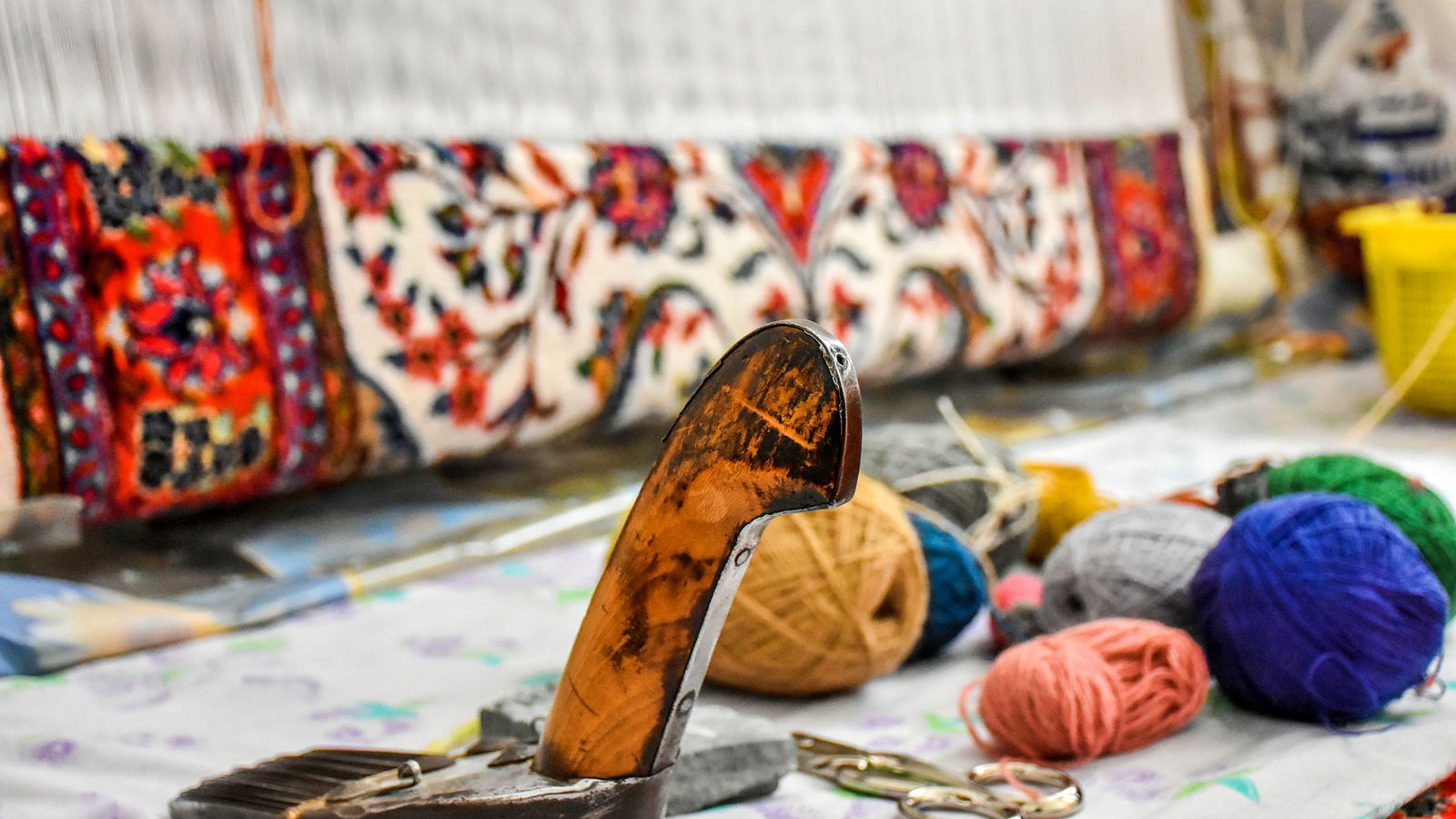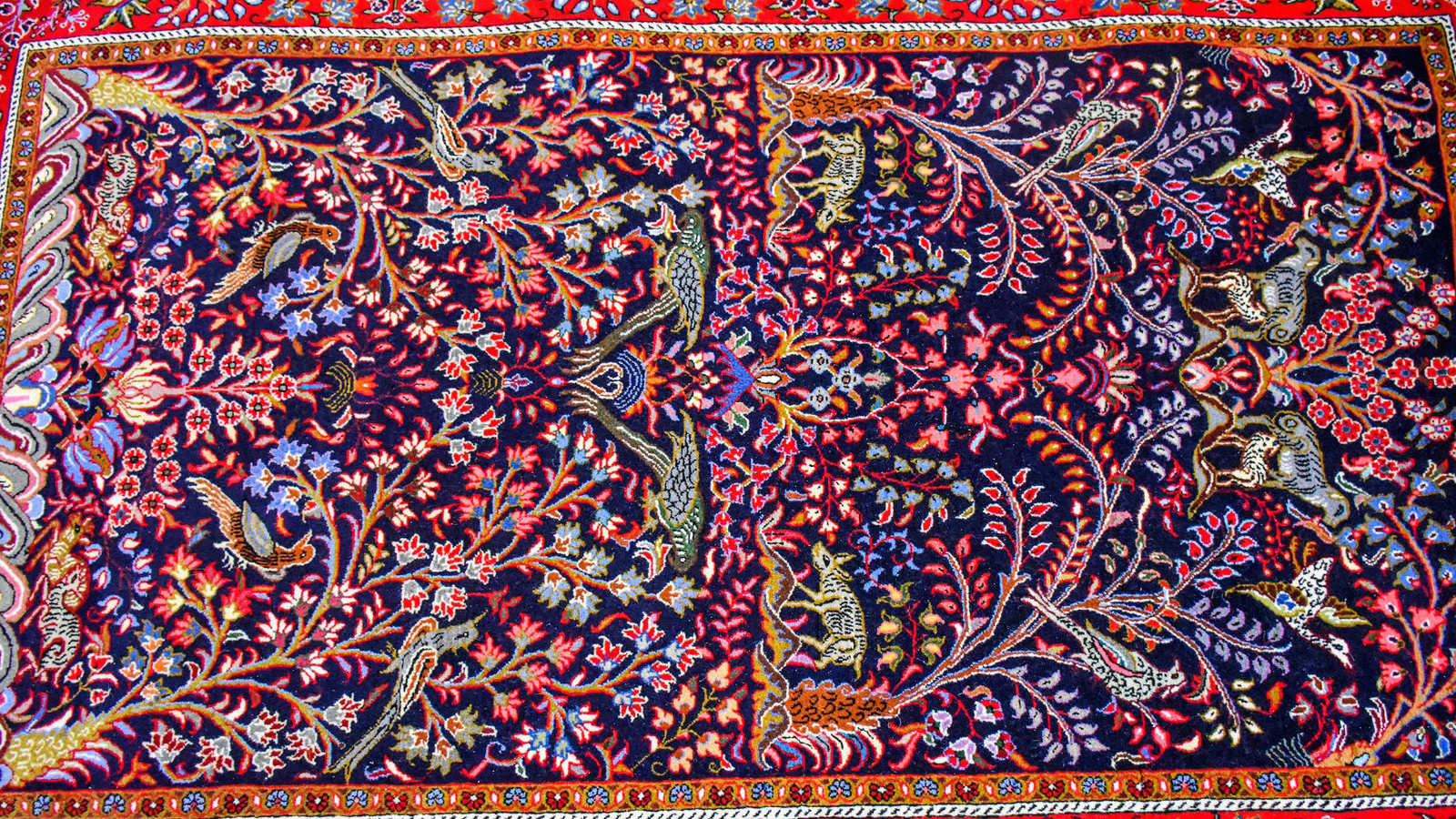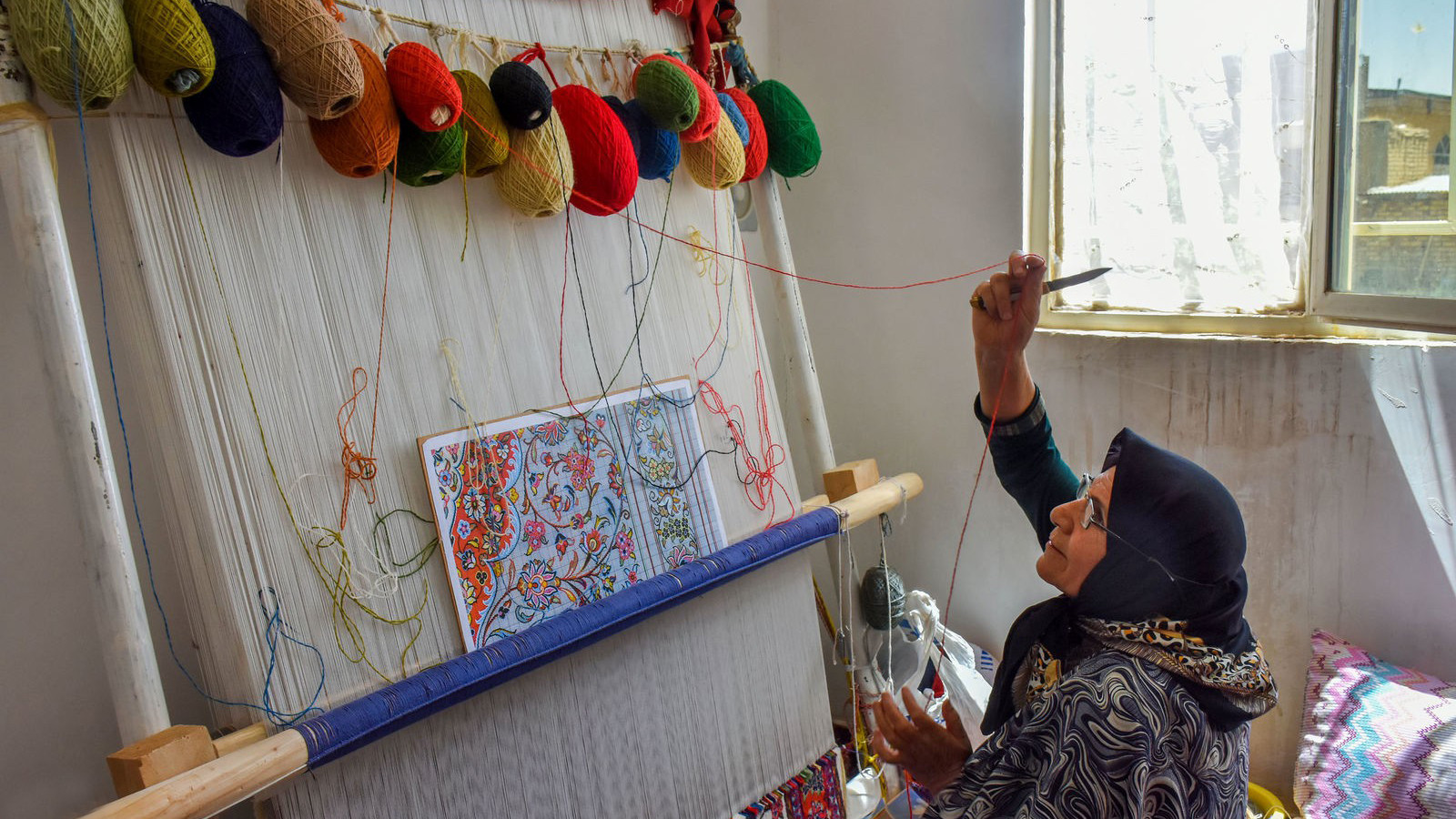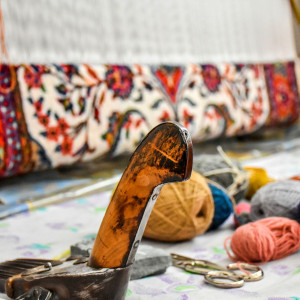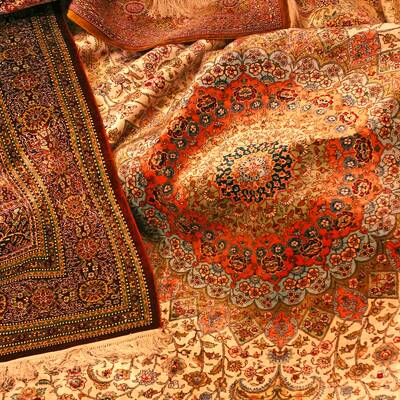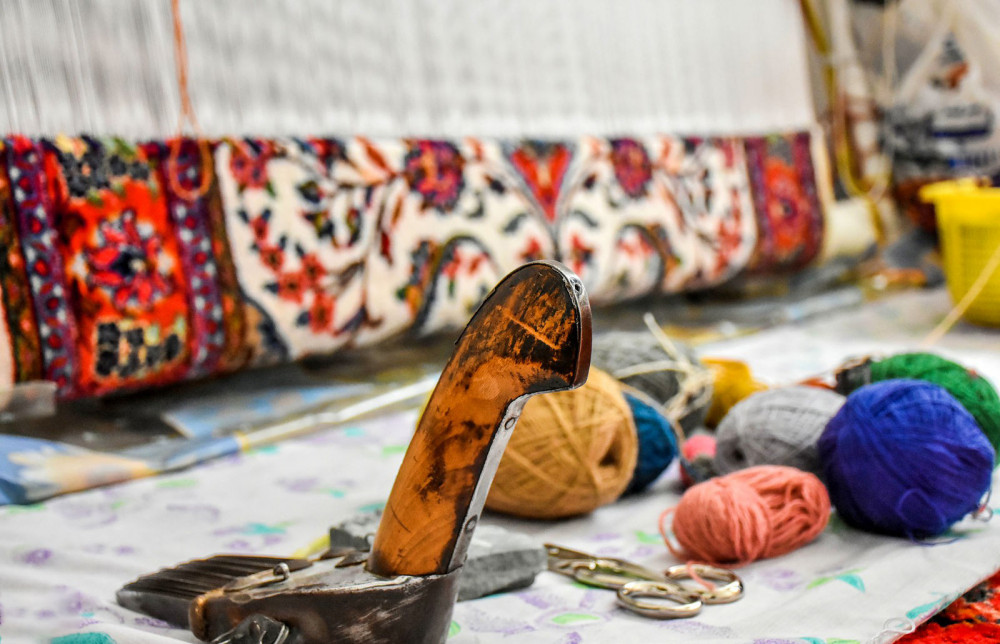
Carpets of Arak
Carpets of Arak, the center of Markazi province, were once the most important of all the region’s trading carpets. They reflect the evolution of carpet handicrafts. So little is known about the history of making carpets before the city was built. However, from the multiplicity of carpet centers surrounding Arak like Qom and Isfahan, we can imagine that making carpets began in Arak from many years ago. Sarouk is one the most famous carpets woven in Marakzi province. In comparison with other kinds, it is thigh and rather fine. The local weavers use a special kind of method to insert the wefts. After each row, they insert 2 wefts and between each five to ten rows another weft is inserted. Sarouk patterns are inspired by cursive arabesque patterns of Isfahan carpets, but they are recreated with less details and in a red background, and a paisley in the form of diamond in blue. Sarouk with pattern of paisley can also be found in Qom, Qazvin, Saveh and Golpaygan. Sarouk weavers usually decorate the margins using “Samavari” and “Kharchangi” and classic “Shah Abbasi” motifs. A historical sample of Sarouk carpet was used in bedroom of Reza Shah, the founder of Pahlavi dynasty and is now kept in Green Palace museum. It has been designed by plain paisleys and woven of silk.
Based on the designs, Sarouk carpets can be categorized into four periods. First, designs from more than one hundred years ago when Arak carpets underwent changes as a trading product. During second period, foreign trading companies developed in Arak. This period dates from the beginning of reign of Naser al-Din Shah Qajar to early years of Pahlavi dynasty. The buyers had their special culture and taste and, therefore, designs were heavily affected by European motifs and color palettes. It was during these years that using fine threads called “Farangi (foreigner)” became common. Third period lasted from 1310 to 1370 (1930s to 1970s) when, by the efforts of Institute of Fine Arts, carpets of Arak and some other cities were restored. In the fourth phase, which is still going on, the Arak carpets are produced locally.
